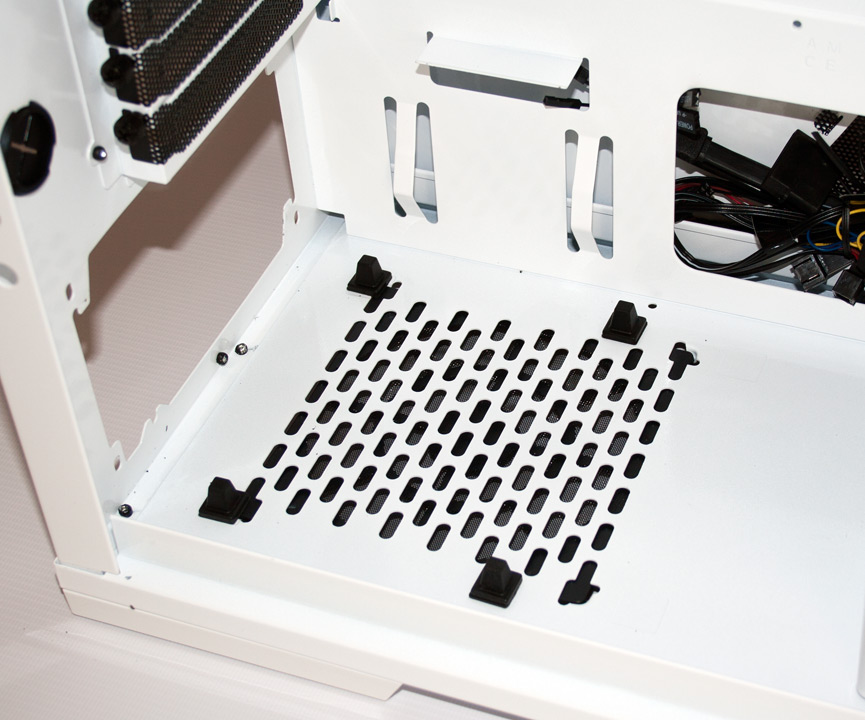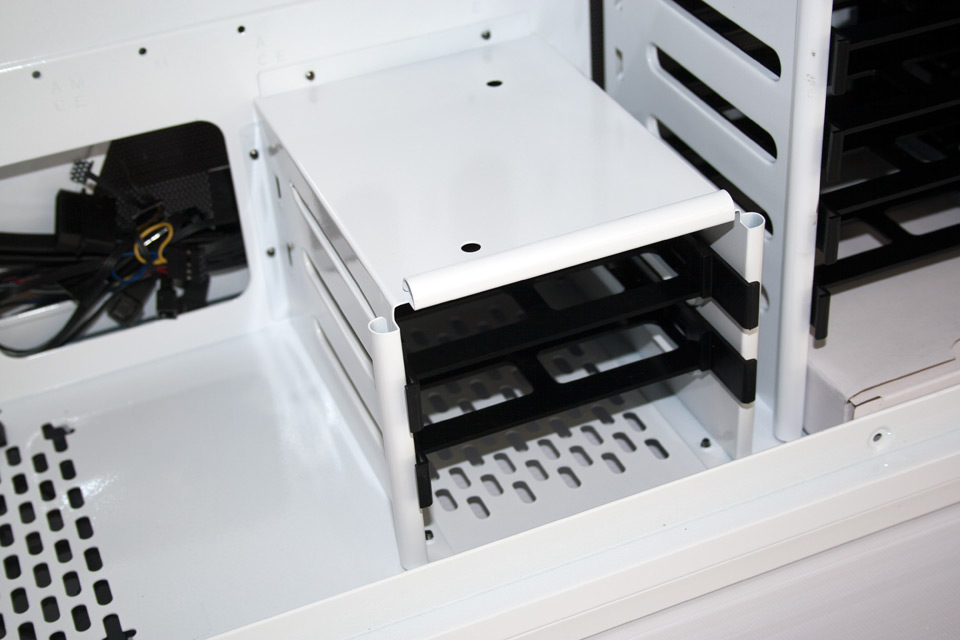NZXT Phantom Full Tower Chassis Review
Andy Ruffell / 13 years ago
InteriorBoth side panels are held on by black thumbscrews, which is a nice contrast with the white panels. Removing the side panel involves removing the thumbscrews and pivoting the panel away. Once removed, the entire inside of the case follows the white colour scheme with black hard drive cages, expansion slots, fan housings and fixings.
In the usual place, we find a location for your power supply. A tool-less installation is used for this and the case allows the PSU to sit slightly raised with thanks to the four rubber mountings. Between these mounting points is space for the fan to breath and to be exhaust to the bottom of the case.
Towards the top of the case sees the two fans, one being the top mounted 200mm and the other being the rear 120mm exhaust fan of which can be swapped out for mounting the likes of a Corsair H80 or Antec Kuhler watercooled all-in-one system
The installation of an optical drive uses the same mechanism that we’ve seen on NZXT cases in the past and is a simple effective method of locking a drive down into place.
For hard drives, a simple tray loading system is in place, which can be a bit fiddly if using for the first time, as it involves bending the bracket out slightly, but we prefer pushing the screw pins out instead for a more comfortable installation.
There is also another separate cage that sits to the side for installation of another two drives. Sadly no SSD adapters are included, but your relevant drive should include these anyway.
There are four rubber grommets for passing cables and connectors through which can make for a pleasant experience when cable tidying. They are conveniently placed for passing through the relevant motherboard cables, optical drive cables and also any front panel or power connectors for your board or graphics card.


























